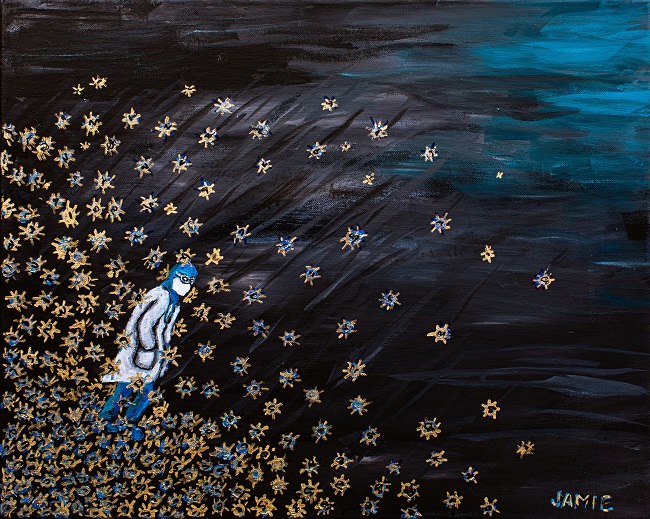Cytokine storm
Cytokine storm is poetic for a medical term.
Have you ever been through a hurricane? It's an intense experience, which I'd recommend avoiding. You know it's coming. You follow its path hoping that you won't be in the center of the projected landfall. When you hear that you are, you hope the predictions are wrong.
As the storm approaches, some rush to protect themselves or escape, while a few surfers revel in the high swells on the usually waveless Gulf of Mexico. On the balcony of a bar, a group of partiers prepares to spend the duration drinking beer and watching the awesome might of nature. You pack up all your essentials, but then realize you yourself are essential and you cannot leave town.

You watch your phone obsessively, looking at forecasts. It's curving north, then east. The water is warmer than usual and that enables the storm to gain power. First it's a 3, then a 4, still heading right towards your home. The skies are growing darker. The surfers have vanished. The winds are howling and the rain falls sideways. Out the window, your car is an island in the sea of the hospital parking lot.
It's coming closer, and it's a monster. Lightning strikes, and windows rattle, some breaking.
After a long time, the storm suddenly pauses, and things become quiet. You take a deep breath and exhale. You feel the change in your sinuses. Then, too soon, the storm is back again, and all you can do is hold on. You'll deal with the wreckage later.
Cytokine storm is poetic for a medical term. This concept first landed on our shores 27 years ago in an article about graft-versus-host disease in stem-cell transplant patients. It churned up again 17 years later in research on recipients of CAR-T therapy. It seems aptly named, as a precipitant cascade of immunologic mayhem. We all remember IL-6 from medical school, but it turns out there are actually 33 of them, and other related things with initials and Greek letters tacked on.
It's all about the key components of your immune system going into overdrive, unchecked and unrelenting. The problem starts with fever and some systemic symptoms and can progress to outright organ failure. It can be induced iatrogenically or can be an autoimmune problem but can also be related to an infection.
Of course, the current storm swirling around us is COVID-19. It's definitely intensified from a tropical depression to full-blown hurricane this season, just as cytokine storm has within so many of our patients' bodies. We tracked the pandemic for months, not knowing if it might come our way or it might weaken. Some of us were frantically boarding up windows while others were ignoring warnings and frolicking like there was nothing to worry about.
It's said that when bison deal with a storm blowing across the plains, they face right into the wind and walk into it, knowing it's the quickest route through. Perhaps that model holds a lesson for clinicians facing the hurricane of COVID-19, which hit just as hard as the most dire predictions and was in my thoughts as I brushed acrylic onto canvas. We cannot run, but at least we are not alone in the storm. It's on all of us. We must garb up and face the bad weather, and perhaps there is some blue sky waiting for us on the horizon.



